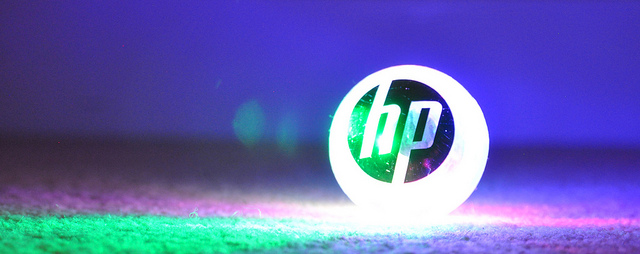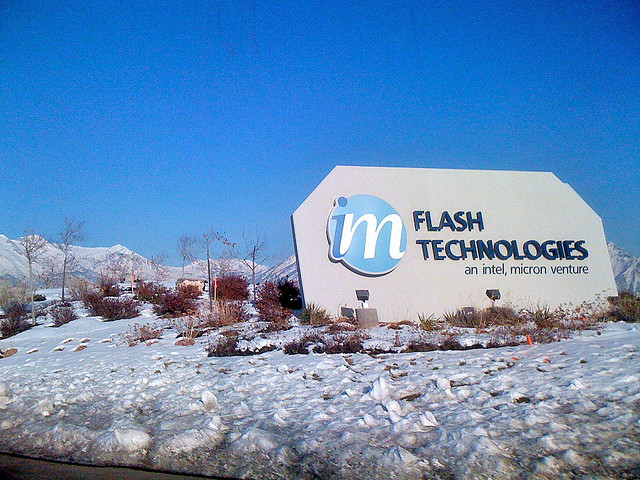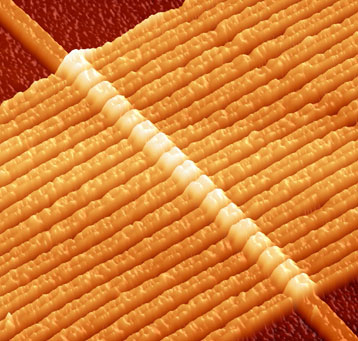HP and SanDisk and the Battle for Storage Class Memory
[vc_row][vc_column][vc_column_text]

The tech world has been full of surprises this year. Multiple mergers (including Western Digital’s acquisition of SanDisk announced this week), a new memory category announced in July, and now this month’s announcement of a strategic partnership between HP and SanDisk. Well, maybe ‘surprises’ is not the correct term. Industry consolidation is par for the course and it is only natural that some breakthroughs will occur every once in a while. The phrase ‘interesting news headlines’ probably fits better.
Storage Class Memory

Whatever the case, two of these interesting news headlines have a lot to do with the pursuit of Storage Class Memory. Storage Class Memory is essentially a hybrid of non-volatile flash memory combined with DRAM to create a fast, dense, affordable non-volatile memory solution, all in one package. It’s certainly an interesting prospect for Gillware, since we will likely have to develop new data recover techniques for this new technology. Looking back to July of this year, the Intel-Micron joint venture announced they had developed something like Storage Class Memory known as 3D XPoint. Though the announcement was great, touting 3D XPoint as being 10x denser than DRAM and 1000x faster than NAND, it still is not quite the end-all, be-all of SCM. The joint venture itself even noted that it will not be replacing DRAM nor NAND, as it sits somewhere in between the two when looking at price and performance together. Even though it will not be replacing those two technologies, the mere presence of 3D XPoint puts Intel and Micron in a very good position, as they are the first to release anything like Storage Class Memory that can be mass produced and widely distributed. 3D XPoint technology is set to launch in 2016 under the brand “Intel Optane.” That is great news for consumers and enterprise data storage executives who want to try it out, but is very troublesome if you happen to be one of their competitors. Since SCM is uncharted territory, there is a chance that Intel and Micron could command the entire SCM market if no one is able to call their bet.
Player 2 Has Entered the Game
Following this long train of thought, it is exciting that HP and SanDisk have just announced a strategic partnership in pursuit of a similar technology. On October 8th, the Executive Vice President of Memory Technology at SanDisk, Siva Sivaram, stated, “our partnership to collaborate on new SCM technology solutions is expected to revolutionize computing in the years ahead.”

The technology they describe in reports sounds almost exactly like 3D XPoint, with 1000x the speed and endurance of NAND flash and “significant cost, power, density and persistence improvements over DRAM.” However, unlike 3D XPoint, the technology has not yet been developed and is not set to launch until sometime between 2018 and 2020. Given this information, the only thing that could cause this technology to “revolutionize computing in the years ahead” is that it is supposedly based on HP’s Memristor technology and SanDisk’s ReRAM technology. Both technologies have been in development for a number of years with little results, so it is unclear how they hope to integrate technologies that may not yet exist at a scalable level. Of course, the announcement lends itself to the idea that they are further along in development than they have let on and hope to refine the technologies through this partnership, but 2018 is still a long way off for the tech industry and it is pure speculation at this point.
Conclusion
If HP and SanDisk hope to bring something worthwhile to the table, they will need to either chart 3D XPoint’s probable development over the next three years and hit above that mark, or find a niche in the consumer/enterprise spaces that 3D XPoint does not hope to fill. Being years behind Intel and Micron is certainly going to make things difficult for HP and SanDisk in the SCM market, but don’t count them out yet. Western Digital’s bid for the acquisition of SanDisk this week (likely finalized in Q3 2016 if vote goes through) brings many more potential resources to the table for the strategic partnership, something they can certainly leverage in the coming years’ development of the project. Being second in a market is also not always a bad thing, as they will have a few years to look at what works with 3D XPoint and what does not, especially in regards to what the market says it wants from this new technology. To use a rather morbid adage that a friend of mine once told me, the early bird may get the worm, but the second mouse gets the cheese. HP and SanDisk now have three years to figure out how to enter the SCM market as the second mouse.
Get a copy of our FREE buyer’s guide to learn about the different SSD form factors and determine which one is right for you:
[/vc_column_text][/vc_column][/vc_row][vc_row][vc_column][vc_btn title=”Click Here to View!” color=”warning” size=”lg” link=”url:https%3A%2F%2Fwww.gillware.com%2Fwp-content%2Fuploads%2F2017%2F12%2FSSD_FormFactor_BuyersGuide.pdf||target:%20_blank|”][/vc_column][/vc_row]
